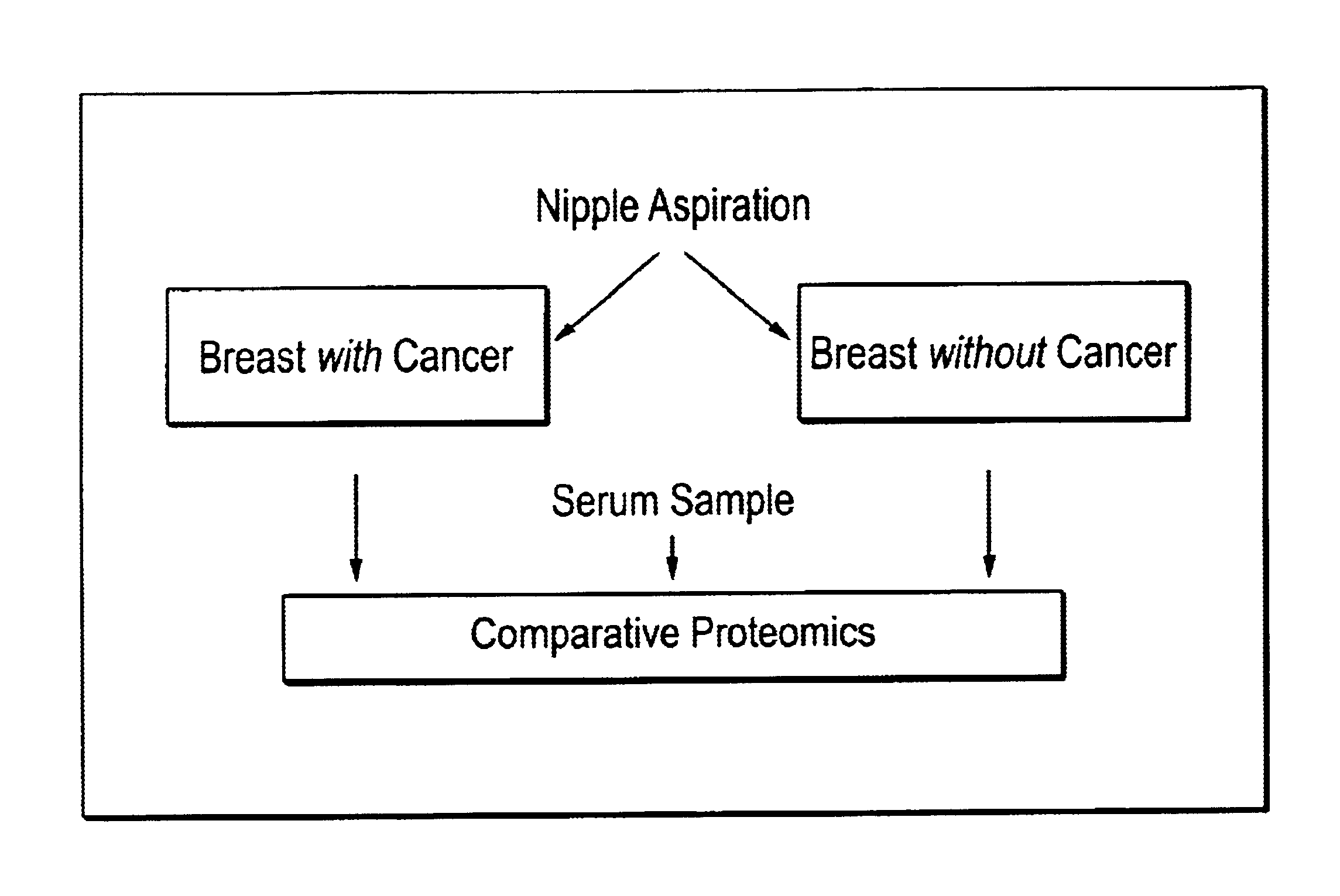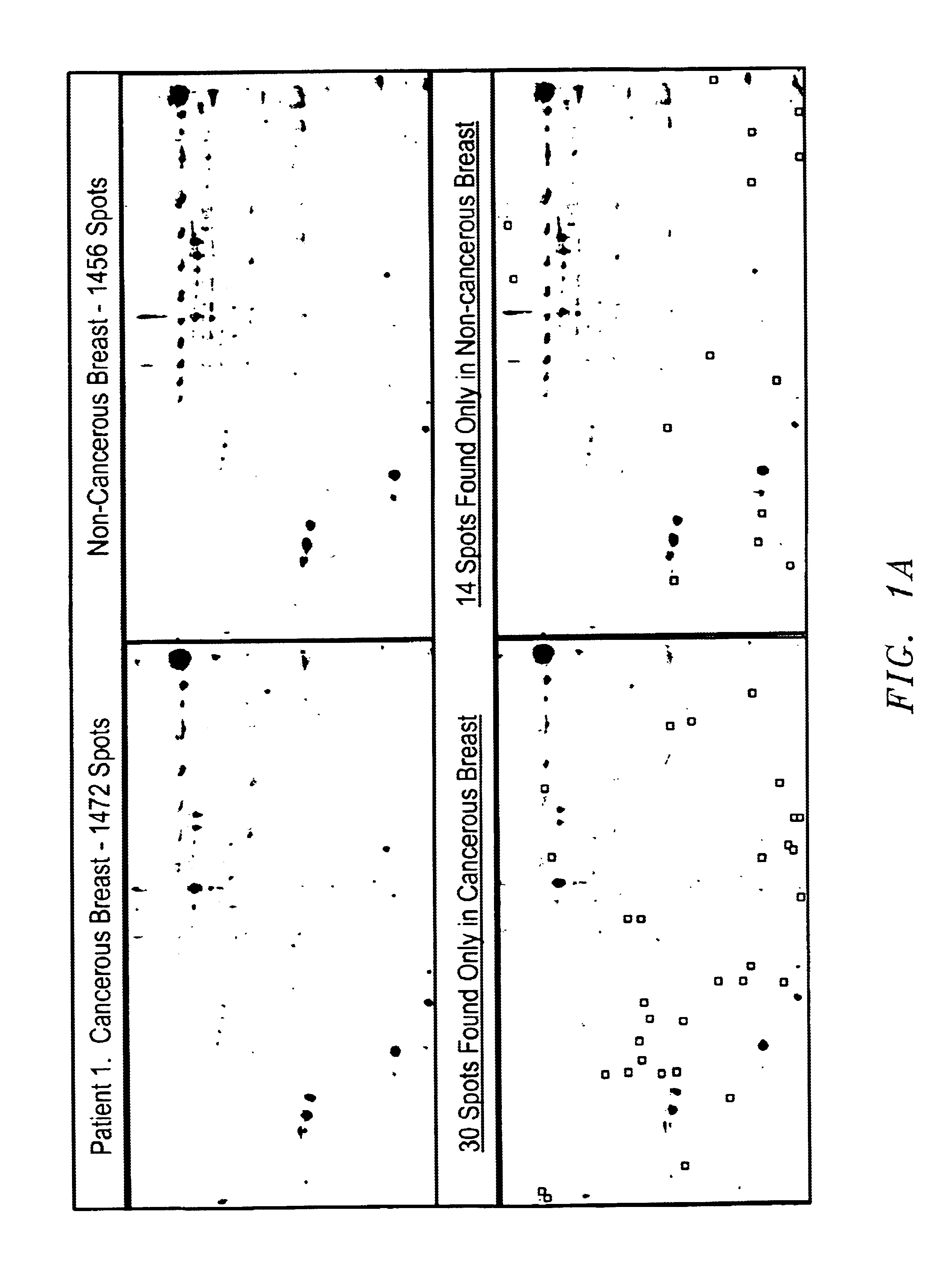Methods and compositions for detection of breast cancer
a breast cancer and composition technology, applied in the field of cancer biology and molecular biology, can solve the problems that the analysis of naf has not been done to generate information regarding breast tissu
- Summary
- Abstract
- Description
- Claims
- Application Information
AI Technical Summary
Benefits of technology
Problems solved by technology
Method used
Image
Examples
example 1
Patients and Methods
[0118]Patients
[0119]Patients who were presented to the University of Texas M. D. Anderson Cancer Center—Nellie B. Connally Breast Center were eligible to participate in this institutional review board-approved prospective investigation if they had biopsy-proven unilateral primary invasive breast cancer and gave written consent to undergo bilateral nipple aspiration. Patients were excluded from participation if they had previously undergone subareolar surgery that might have disrupted the terminal ductal system. To determine whether NAF protein expression patterns in women with unilateral breast cancer were similar to or different from those in healthy women, individual were also eligible to participate if they were over 40 years of age and had no evidence of breast disease or cancer as evidenced by normal findings on physical examination and breast imaging.
[0120]Ductal Fluid Collection
[0121]Ductal fluid was collected by nipple aspiration using a handheld suction ...
example 2
Results
[0127]Four women, three with unilateral breast cancer and one healthy subject, took part in this study. The numbers of protein spots detected by image analysis of Sypro Ruby-stained two-dimensional gels (pH 4-7) obtained upon electrophoresis of 80 pg samples of NAF proteins are listed in Table I.
TABLE 1Numbers of Proteins Expressed in Ductal Fluid Specimens fromOne Breast but Not the Other in Three Patients with UnilateralBreast Cancer and One Healthy Subject.Number of Proteins Detected only in theIndicated Breast / Total Number of ProteinsDetectedBreast withoutCancerBreast with Cancer(or, in Healthy(or, in Healthy Subject,Subject, RightLeft Breast)Breast)Patient 130I147214I1456Patient 2202I142854I1280Patient 370I164673I1649Healthy Subject3I13982I1397
[0128]In the patients with cancer, substantial qualitative differences were identified between the protein expression patterns in the breasts with and without cancer. The number of protein spots detected in the breast with cancer a...
example 3
Discussion
[0129]The human genome contains about 35,000 protein-coding genes, and in the study described here, over 1000 separate protein species were identified in ductal fluids from the breasts of women with a unilateral breast cancer. substantial qualitative differences in protein expression between the breast with cancer and the breast without cancer was also found in each of the three patients studied. The value of nucleic acid based discovery technology, such as the use of cDNA microarrays, cannot be underestimated. However, this technology does not yield information about the post-translational modifications that are very common characteristics of carcinoma-associated proteins.
[0130]Individual profiles of proteins secreted by breast ductal cells most likely vary from one woman to another, probably as a function of an individual's specific hormonal milieu. For this reason, comparison between the breasts of an individual is an attractive approach as an internal control for these...
PUM
| Property | Measurement | Unit |
|---|---|---|
| viscosity | aaaaa | aaaaa |
| viscosity | aaaaa | aaaaa |
| molecular mass | aaaaa | aaaaa |
Abstract
Description
Claims
Application Information
 Login to View More
Login to View More - R&D
- Intellectual Property
- Life Sciences
- Materials
- Tech Scout
- Unparalleled Data Quality
- Higher Quality Content
- 60% Fewer Hallucinations
Browse by: Latest US Patents, China's latest patents, Technical Efficacy Thesaurus, Application Domain, Technology Topic, Popular Technical Reports.
© 2025 PatSnap. All rights reserved.Legal|Privacy policy|Modern Slavery Act Transparency Statement|Sitemap|About US| Contact US: help@patsnap.com



